Review
The MX-30 has left Fleet News after a year in our care and more than 8,000 miles on the clock. So, what resonates most about Mazda’s first entirely electric SUV?
It is a standout car in the way it looks, with those pillarless, backwards opening rear doors and its interior, with the sustainably sourced cork and recycled plastic bottle lining in the storage areas, striped, grey material seats and premium quality fittings.
It’s a very comfortable car to drive, with great steering feel and responsive handling. With steering paddles you can, with a bit of practice, adjust the amount of regenerative braking to provide a tiny bit more power to the battery.
We voiced concerns about the relatively limited battery range. Mazda states 124 miles; I’ve got a maximum of 117 – and at temperatures of around 4 degrees Celsius or below, 100% charge gives 97 miles from a domestic, 2.3kW three-pin socket. My commute is 60 miles per day.
Factor in another journey and I began to get range anxiety.
But in its defence, Mazda says 124 miles is more than enough considering the average UK commuting distance of 26 miles per day.
When asked, Mazda didn’t specify the MX-30’s competitors, but its range puts it in competition with the Honda E with 125 miles. If you agree then the MX-30 is the better option in terms of space and the financials.
Each of the three Honda E models available have a higher P11D price (the cheapest is £34,310 compared to our range topping Mazda’s £30,590), BIK tax charge and running costs figure, 38.23ppm versus 34ppm.
So, if you can live with the range (and those doors), the MX-30 could be the stand out car for your fleet. On that note, I was driving past a group of ‘young people’ waiting for their school bus in my village. One of them said to his mate, looking at the MX-30: “What the hell is that?” Who knew an SUV could evoke such a reaction?
> Mazda MX-30 and Honda E tax comparison
> Mazda MX-30 charging, tax and spec data
One app to rule them all?
Go to the App Store or Google Play on your mobile and you’ll find the MyMazda app, a new version of which was launched with the introduction of connected services, currently only available for drivers of the MX-30 and 2021 CX-5.
It’s common for electric cars and hybrids to have supporting apps.
The Nissan Leaf I drove three years ago, and the Peugeot 3008 hybrid last year had them. But the Mazda app is the most intuitive and useful, without having to struggle to see its benefits. Download and sign in, (scan your vehicle’s VIN number to use the connected services) and you’re set to go.
Dealer location, vehicle data and booking a service are expected features, but a couple of others go beyond that.
One connected service, the destination finder allows you to input location on your mobile, then send it to the MX-30’s sat nav when you’re ready to go.
Other simpler benefits include alerts informing you when the battery is charging and when the battery is full, tyre pressures, battery level and range and even when the doors are unlocked.
Other connected services include remote controls, such as adjusting the interior vehicle temperature and toggling the climate control, front and rear defrost on and off.
Note, access to connected services is free for three years from first registration of your car. Pricing beyond then has not been announced.
It’s worth checking out the series of ‘help’ videos on YouTube explaining features of the app, the majority under one minute long, ranging from installing it on your device and registering your car to booking a service and route planning.
Here’s a video called ‘How to live with an EV’, focusing on the MX-30 and interviewing Mazda bosses about their experiences with it.
Detailed charging data and spec on the Mazda MX-30.
Three recalls in two months
Recalls are a necessary, but disruptive part of fleet operations to ensure the safe running of your vehicles.
And while EVs represent the cutting edge of technology in many regards, they are not devoid of problems, relating to both the powertrain as well as more run-of- the-mill features.
The Mazda MX-30 has, in the two months I’ve been driving it, been the subject of three recalls. And unlike some EVs over-the-air (OTA) updates, as pioneered by Tesla, aren’t available to fix the issues.
These have been the following: On some MX-30 vehicles, the electronic control unit (ECU) may not go into sleep mode after turning the ignition off. It meant that an electrical current may continue to flow causing the 12-volt battery to discharge; a control unit reprogramme; and the front passenger airbag could split at the seam when deployed.
The latter recall was issued in late October and our car was returned to Mazda for the work.
For the other two I took the car to the EMG Mazda dealership in Boston for an hour.
The service manager then raised concerns, confirmed by Mazda at the beginning of this month, that the airbag fix wasn’t done before the car was returned to me from Dartford. Another visit to Boston was required, with the part needed on-hand fortunately. The dealership is 20 minutes from home and so it’s a good job the dealership has wifi and I can get some work done while I wait.
For information, the Driver and Vehicle Standards Agency website lists - by VIN number - 1,108 recalls in 2021. The total number of vehicles affected is given as 2,862,035. This exceeds by some margin the total number of news cars sold last year (1.65 million) – the recalls involved vehicles built as far back as 1988.
Detailed charging data and spec on the Mazda MX-30.
The psychological impact of cold weather on battery capacity
Mazda plans for total sales volumes of 2,106 units in a full year, and for 57% of those to go into fleet channels. So, who are the 1,219 drivers being targeted by Mazda and what is the competition it is fighting off to win this modest number?
A Mazda spokesman believes the MX-30 is an “ideal commuter car”, perfect for those company car drivers who are either 100% office based “or a hybrid of home and office working”.
Now, if your work life balance is disciplined enough to be able to manage with the car’s stated range of 105 miles, with no shocks and surprises in your working week, or you have a planned charging regime this might be enough to be comfortable with.
Factor in cold weather and I’ve seen the fully charged battery range at 97 miles. A nine-mile difference isn’t much, but the psychological impact of under-100 miles was enough to have me asking my partner if I could borrow her diesel car to take a 94-mile journey from home into Norfolk.
I just didn’t want to risk it on a trip that was very much outside of my typical weekly commuting/charging pattern. And it’s these ‘unknowns’ that put the MX-30 into the niche appeal category, befitting its low sales volume.
Detailed charging data and spec on the Mazda MX-30.
The most pressing question is...
The most pressing question I have about the MX30 has nothing to do with its power source. Rather, what I want to know is what was the thought process behind the rear-hinged rear doors, which can only be opened when the front ones are open. Think of the Mazda RX-8 from the noughties.
The access they provide to the back is quite small for my 87-year-old mother to get in. It was a similar story with a coffee table I bought – the front seat had to be adjusted to the upright position and brought as far forward as it possible.
Responding to my question, a Mazda spokesperson said: “The freestyle door is carefully designed to facilitate smooth, effortless exit from the cabin as well as being a stand-out style feature that emphasises the open and airy nature of the cabin.”
The doors, he said, makes the “line of motion of passengers simple”, so, when placing luggage in the rear seat or getting in the front seat, it’s an “easy movement”.
In a previous report, I’ve mentioned how our Mazda MX-30 mixes new with old, with the use of cork trim harking back to the manufacturer’s origins as a sustainable cork company providing a stark contrast to its state-of-the art fully-electric drivetrain.
The interior also has another throwback to what seems like a previous era of new cars – an infotainment system which doesn’t rely on a touchscreen to operate.
Instead it uses a rotary dial positioned in the centre console just ahead of the gear selector.
I’m a big fan of this as I often find touchscreens fiddly to use, particularly when the vehicle is moving, and I’ve always found the more traditional method to suits me better.
Menus on the infotainment system are arranged in a common-sense manner and it’s proved easy to find any trip information I’ve been looking for, set destinations on the sat-nav, switch radio stations, change vehicle settings and so on.
The display on the screen itself is sharp and enhances the already impressive user experience.
One of the other benefits of this Mazda’s set-up is that it allows the screen to be positioned right at the top of the centre console and further away from the driver than would otherwise be needed if it was touch operated.
This makes it easier for me to glance quickly at it while driving, meaning my eyes are off the road for the least time possible.
It also has the added benefit that in any moment when I forget the system is not touch operated, I’m unable to smear the screen with greasy fingerprints.
Public charging woes dent a blemish-free experience
Despite the limitations of our long-term Mazda MX-30’s battery range, it hadn’t caused me any issues.
Not many journeys needed me to travel close to the 124-mile capacity and when they did or exceeded that, a little bit of planning meant I was able to find a working rapid charge point along the route.
This changed when on a Sunday afternoon when I needed to drop my brother off at Stansted airport.
The 130-mile round trip meant I would need to stop on my way home, and even with a 15-minute charge I expected it to take one-and-a-half hours. It took four-and-a-half hours.
It seemed straightforward. I’d identified a Shell Recharge charger around one-third of the way home to be the best place to stop.
I knew it was working because we took a slight detour on the way down to check it, but when it came to plugging the Mazda in, the unit kept telling me there was a charger error.
What this error was I don’t know, as the charge point worked perfectly with a Volkswagen eGolf which was also there and which I let use it between my attempts as I pondered my next move.
I didn’t have enough charge to get to the next rapid unit on my way home, so I drove to the nearest supermarket with a 7kW charger.
After 40 minutes waiting, I had enough charge with 10 miles in hand to make it to the next rapid charger so headed that way.
This was located in the car park of a leisure centre, but what Zap-Map didn’t tell me was that outside opening hours the car park gates were locked, so I couldn’t get in.
At this point I didn’t have enough charge to get home, so had to backtrack around four miles down the road to the only 7kW charger within range only, when I got there, to find that it was on an industrial estate that was... behind locked gates.
Fortunately I found a helpful security guard who let me in and after 30 minutes charging on an unlit, empty estate, I had enough electricity to get home with five miles.
At the end of the ordeal, I was tired, hungry and really grumpy. Apart from this one occasion, my time with the MX-30 has been blemish-free, but this experience really soured my ownership experience.
Great for drivers, but rear seat space is limited
As a driver, I’m a big fan of our long-term Mazda MX-30. It shares the same MX branding as the manufacturer’s popular MX-5 sports car, and although the handling is not as sharp as the two-seater’s, it’s still impressive.
There’s a nice weight and directness to the steering, while the composed ride strikes a fine balance between sportiness and comfort.
As a front-seat passenger, I’d be equally as happy. There’s plenty of room, the seat– just like the driver’s identical one – is comfortable and supportive, while the quality of materials and build of the surrounding cabin is high.
It’d be a slightly different story if I was a rear-seat passenger, however. There’s plenty of headroom thanks to the MX-30’s SUV coupe styling, but legroom is much less generous.
The biggest issue, however, is caused by the rear doors. These are rear-hinged so open the opposite way to the front ones, and overlap so the front doors need to be opened before the rear ones can be.
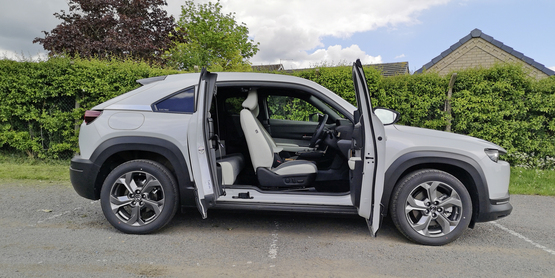
They look great and if you park somewhere with loads of room around the car where you can open the front doors fully, then the biggest issue is how you have to sink into the seats as the backrests are beyond the rearmost part of the door.
However, in a busy car park where you cannot open the doors fully, getting in and out is much harder: after clambering out, rear seat passenger have to adopt some kind of dance to shift from behind the part-opened rear doors to behind the part-opened front ones, so they can close the back doors before being able to clear the vehicle.
This isn’t a big issue for me as I rarely use a car’s rear seats for passengers but quite often put shopping or other bags on thmem, but have stopped doing this because of the added faff the rear doors and set-back seats have created.
This has meant I’ve used the boot much more than I usually would, which has not been a hardship as it’s a decent size (341 litres) and has a practical square shape.
It’s also meant I discovered a really handy feature which may otherwise have passed me by: there’s a button on the inside of the bootlid which you can press to lock the doors, meaning you can just shut the boot and walk away.
It’s a relatively minor feature, but just adds to the overall positive ownership experience.
Making us think differently about journeys
Switching into our fully-electric Mazda MX-30 long-termer has made me think about journeys differently.
When I’ve been running a conventional ICE vehicle or a plug-in hybrid, I’ve been able to just jump in the car and drive to my destination, knowing that if I need to refuel, it’s just a five-minute task at one of the 8,000 or so filling stations in the UK.
"...charging at a rapid charger means it costs about the same to ‘fuel’ an electric vehicle as it does a diesel model, eradicating one of the oft-cited benefits of running BEVs."
Now I’m in a battery electric vehicle with a range of 124 miles, it’s become more complicated.
My first instinct now before a journey is to look on Google Maps to see how far I need to go and, if it is more than a 100 mile-round trip, then at Zap-Map to see where suitable rapid charge points are located.
My longest trip in the MX-30 so far has been from my Norfolk home down to a hotel near Slough – 106 miles away - for a work event.
Starting off with a full battery, I identified a 150kw BP Pulse rapid charge point in Gerrards Cross 103 miles away, which I reached with 17 miles indicated range remaining.
A 20-minute charge costing £4.65 put 11kWh into the battery (the MX-30 can be charged at a maximum speed of 50kW) put almost 40 miles of range into the car which was enough to comfortably get me to my destination and then, on my way home, to my second rapid charge point of the day: an Instavolt in St Albans.
This time a stop of 48 minutes saw 21kWh of electricity put into the car, enough for around 70 miles, at a cost of £8.52.
Both times I was able to pay on contactless bank card, making the process easy.
The journey taught me three main things. Firstly, the public charging infrastructure is massively better than in 2018 when I ran a Volkswagen eGolf.
Secondly, driving at 70mph uses a surprising amount more energy than travelling at 60mph.
And thirdly, charging at a rapid charger means it costs about the same to ‘fuel’ an electric vehicle as it does a diesel model, eradicating one of the oft-cited benefits of running BEVs: a factor worth considering for fleet decision-makers when making total cost of ownership calculations for individual drivers.
Just the right amount of 'quirkiness'
I’m a fan of cars with a bit of quirkiness about them and the fully-electric MX-30 has just about the right amount of quirk for me: not too much to make it a novelty and not too little to make it just one of the crowd.
The most obvious example of this is the rear doors. Similar to those in its 2000s’ sportscar the RX-8, they open backwards and can only be used when the front doors are open.
So far it seems to be style over substance as they are less practical than traditional rear doors and they do make access to the rear seats trickier.
But the quirkiness also extends into the cabin. It shares the high quality of build and materials of other Mazda models as well as the general design ethos, but with a notable differences.
The most obvious is the cork-lining used in the storage areas around the bottom of the centre console. Seems a strange choice of material.
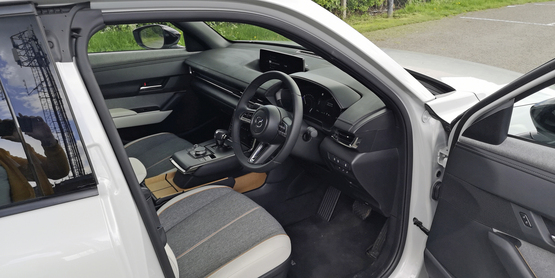
Mazda MX-30 Sport Lux joins our fleet
The MX-30 is Mazda’s first all-electric car and shares the same underpinnings as the CX-30. It has a lightweight 35.5kWh battery offering a claimed range of 124 miles which Mazda says is far above the average UK commuting distance of 26 miles a day.
The MX-30 is available in three trim levels. SE-L Lux (£28,545), Sport Lux (£30,545) and the GT Sport Tech (£32,845).
Key features of our Sport Lux model are 18-inch alloys, privacy glass, front- and rear-parking sensors and reversing camera, LED headlights, keyless entry, heads-up display, 8.8-inch display with sat-nav, Apple carplay and Android Auto. Our test car also has single colour metallic paint which is a £550 option.
A full charge will take around five hours (7.4kWh) while DC rapid charging to 80% capacity will take as little as 36 minutes. All MX-30s come with free installation of a NewMotion home charger.
Performance-wise the electric motor produces 145PS and 271Nm of torque and Mazda claims a 9.7-second acceleration to 62mph and a limited maximum speed of 87mph.
> Interested in comparing electric vehicle data? Check out our EV tool.
> Interested in ensuring the efficient use of EVs. Check out our dedicated editorial sections: Insight & policy | EV news | Charging & infrastructure | Costs & incentives | Benefit-in-kind | EV case studies | EV road tests
Jeremy has been a journalist for 30 years, 25 of which have been in business-to-business automotive. He was a writer and news editor on Fleet News for three years. He is Bauer B2B’s head of digital operations helping to manage the digital assets of Fleet News, and sister-brands Automotive Management and RAIL.
In 2025 he is an Association of Online Publishers awards judge.
For six years Jeremy was Automotive Management editor.


Specs
| Manufacturer | Mazda |
| Model | MX-30 |
| Specification | MX-30 SUV 0.0Electric 35.5kWh 145 Sport Lux Auto 21MY |
| Model Year | 0.00 |
| Annual VED (Road tax) | £0 |
| BIK List Price | £31,095 |
| CO2 | N/A |
| BIK Percentage | 2% |
| Insurance Group | N/A |
| CC | N/A |
| Fuel Type | Electric |
| Vehicle Type | SUV and Crossover |
| Luggage capacity (Seats up) | 5litres |
Running Costs
| P11D | £31,095 |
| Insurance group | N/A |
| Fuel Type | Electric |
| Cost per mile | 79.96ppm |
| Fuel | 4.02ppm |
| Depreciation | 73.83ppm |
| Service maintenance and repair | 2.11ppm |
Rivals
Info at a glance
-
P11D Price
£31,095
-
MPG
N/A -
CO2 Emissions
N/A -
BIK %
2% -
Running cost
3 Year 60k : N/A 4 Year 80k : N/A -
Fuel Type
Electric

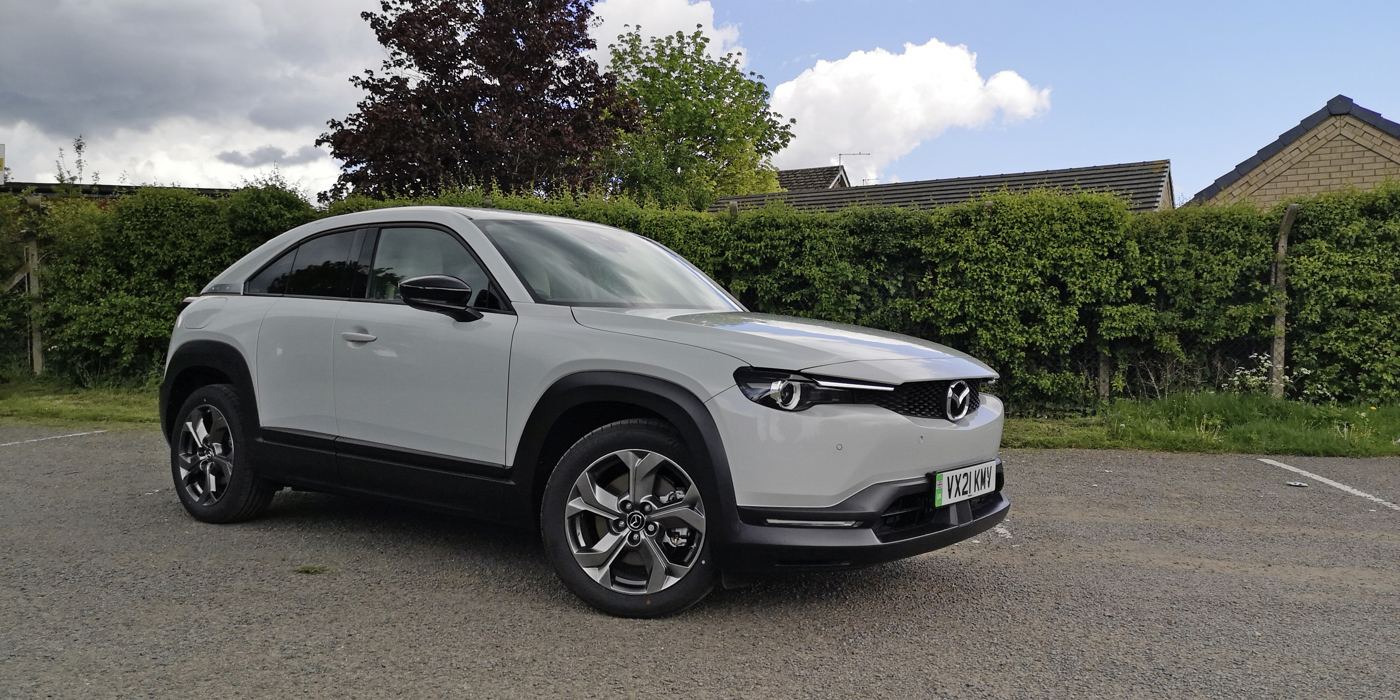







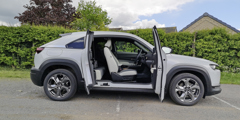
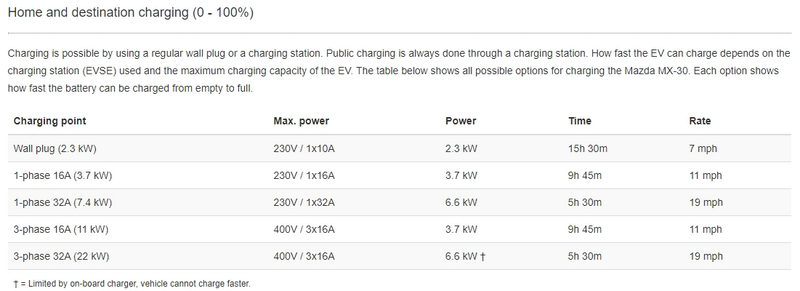
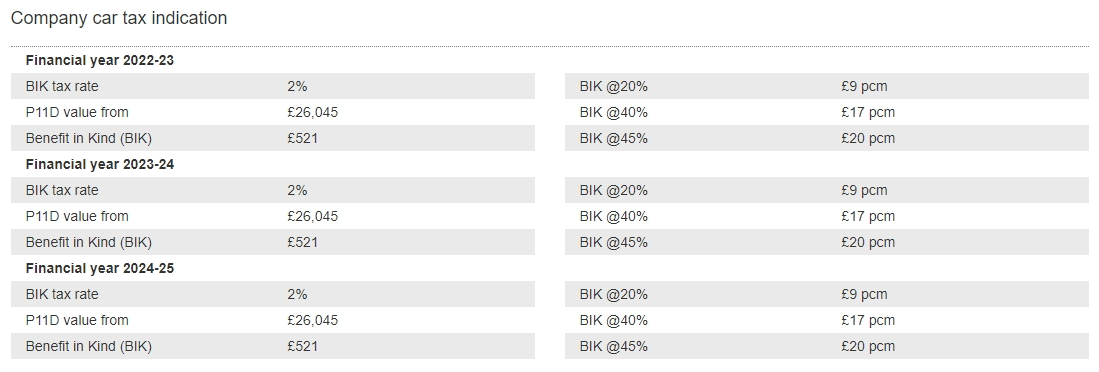
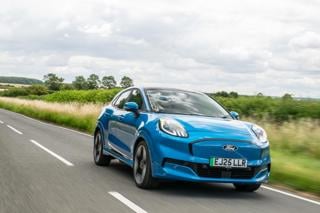

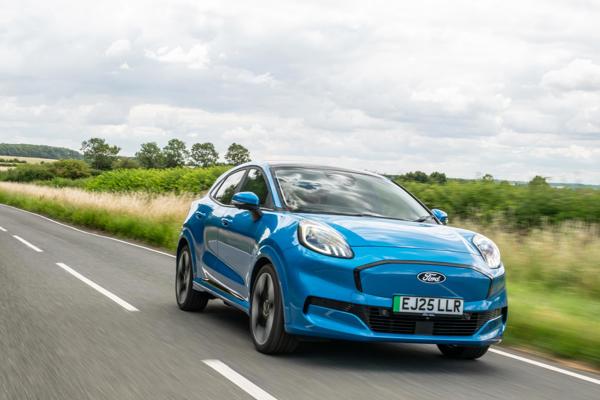
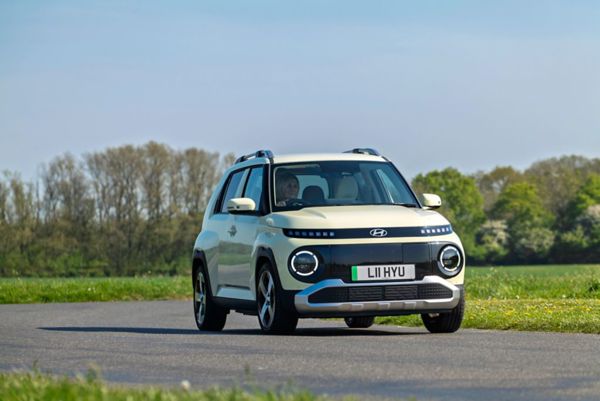


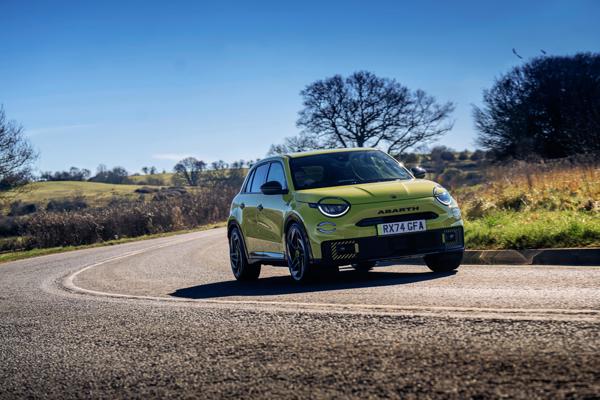
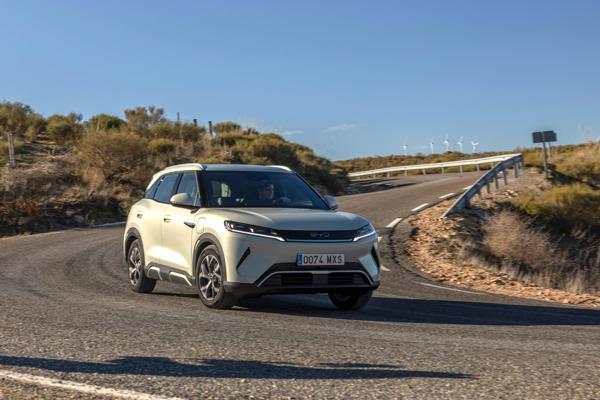


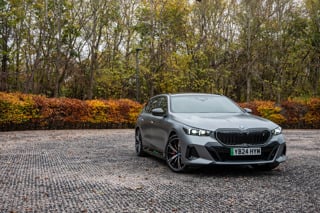

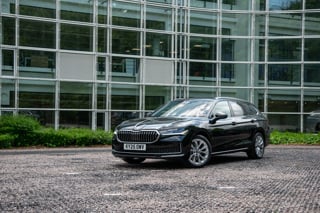












Login to comment
Comments
No comments have been made yet.